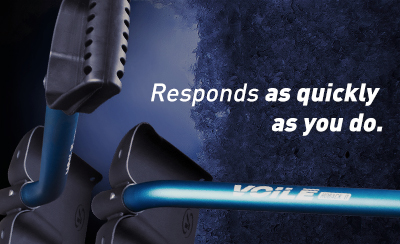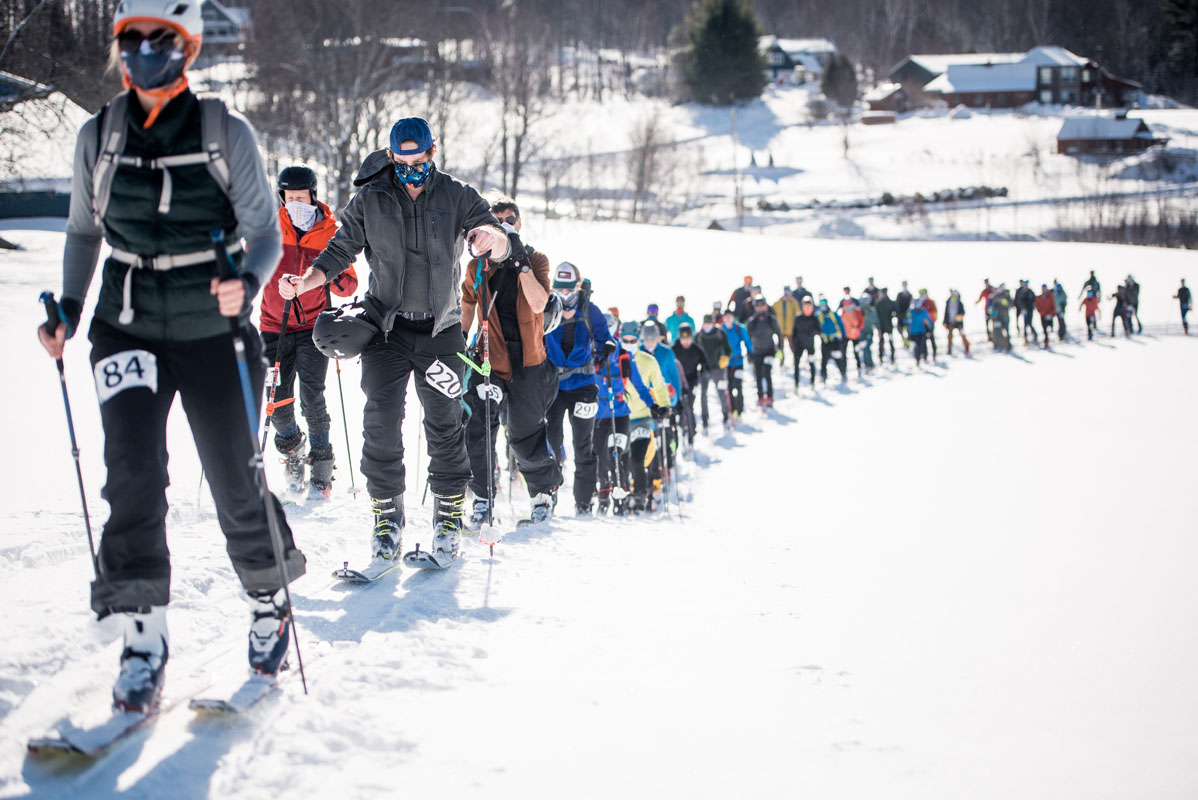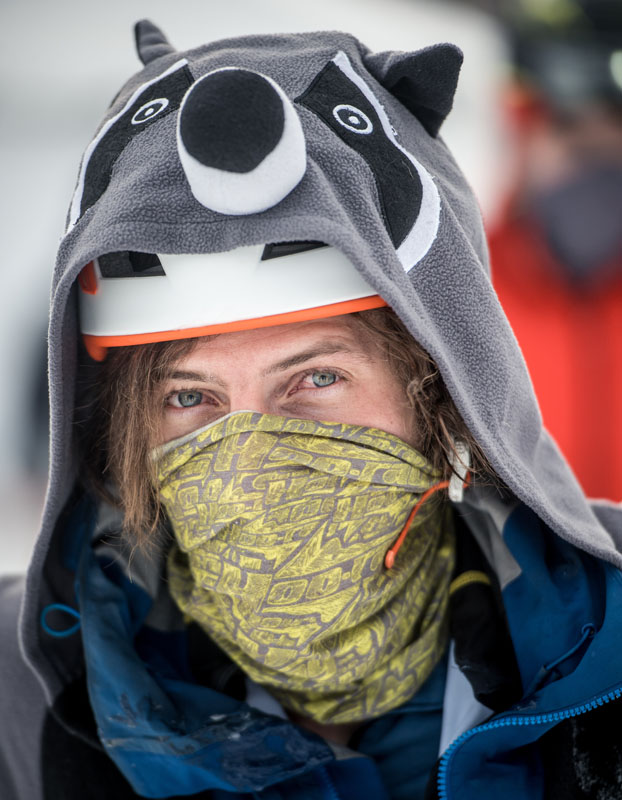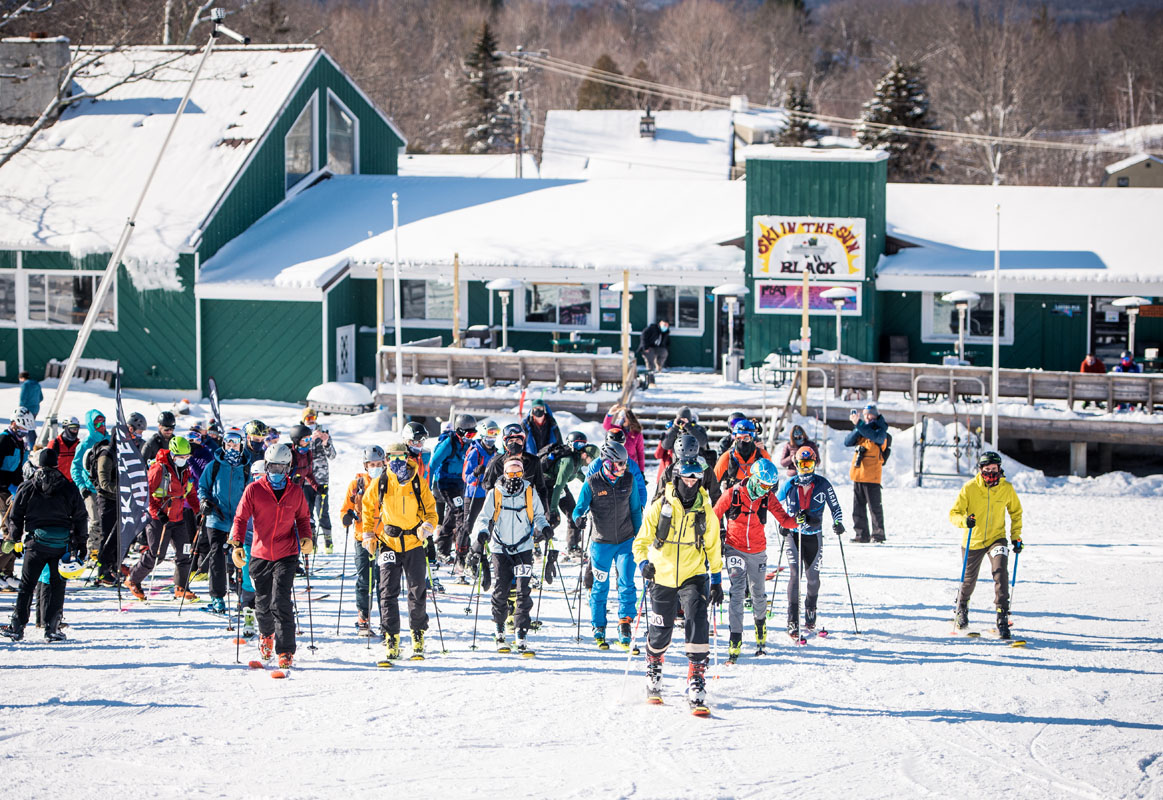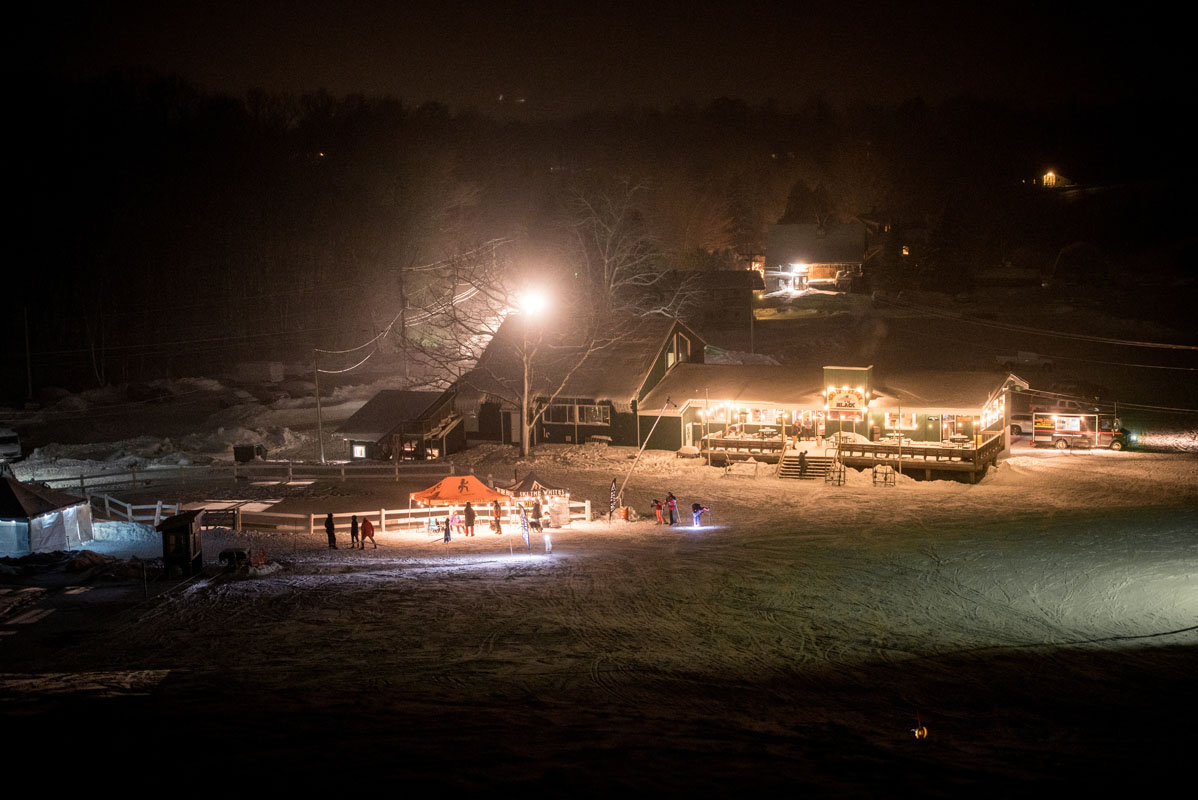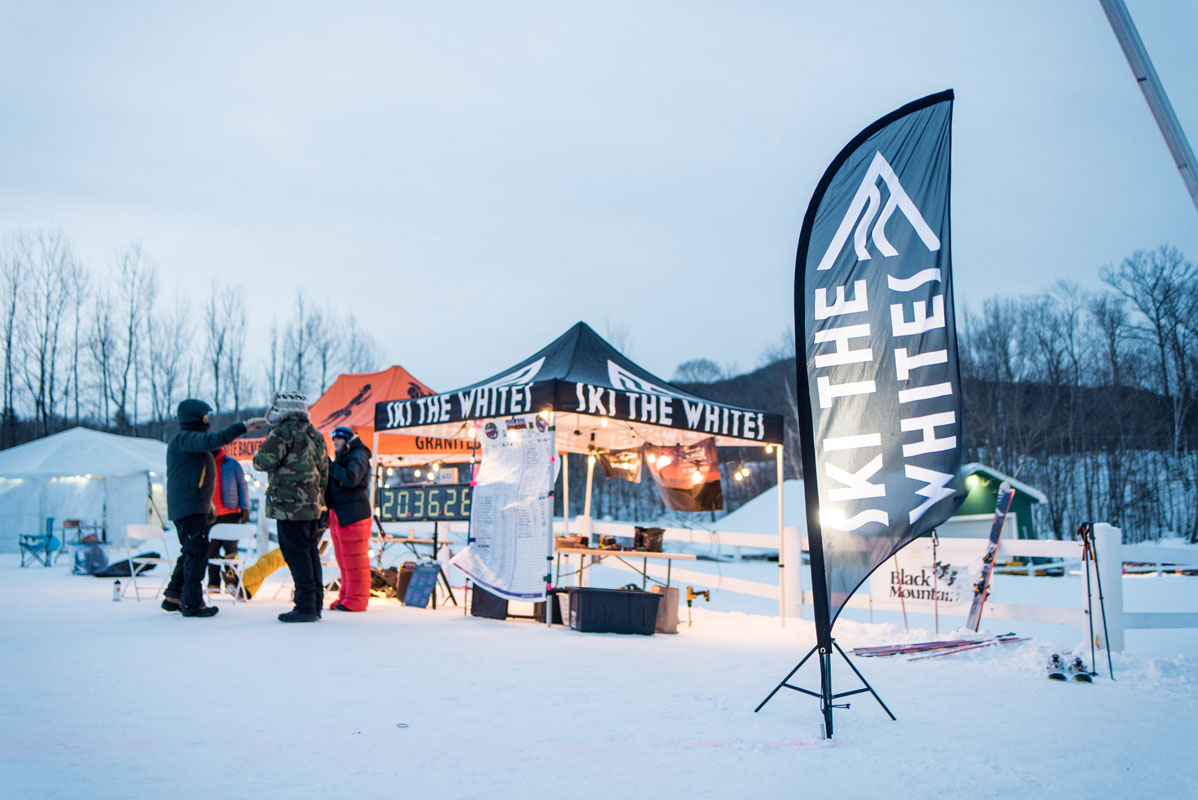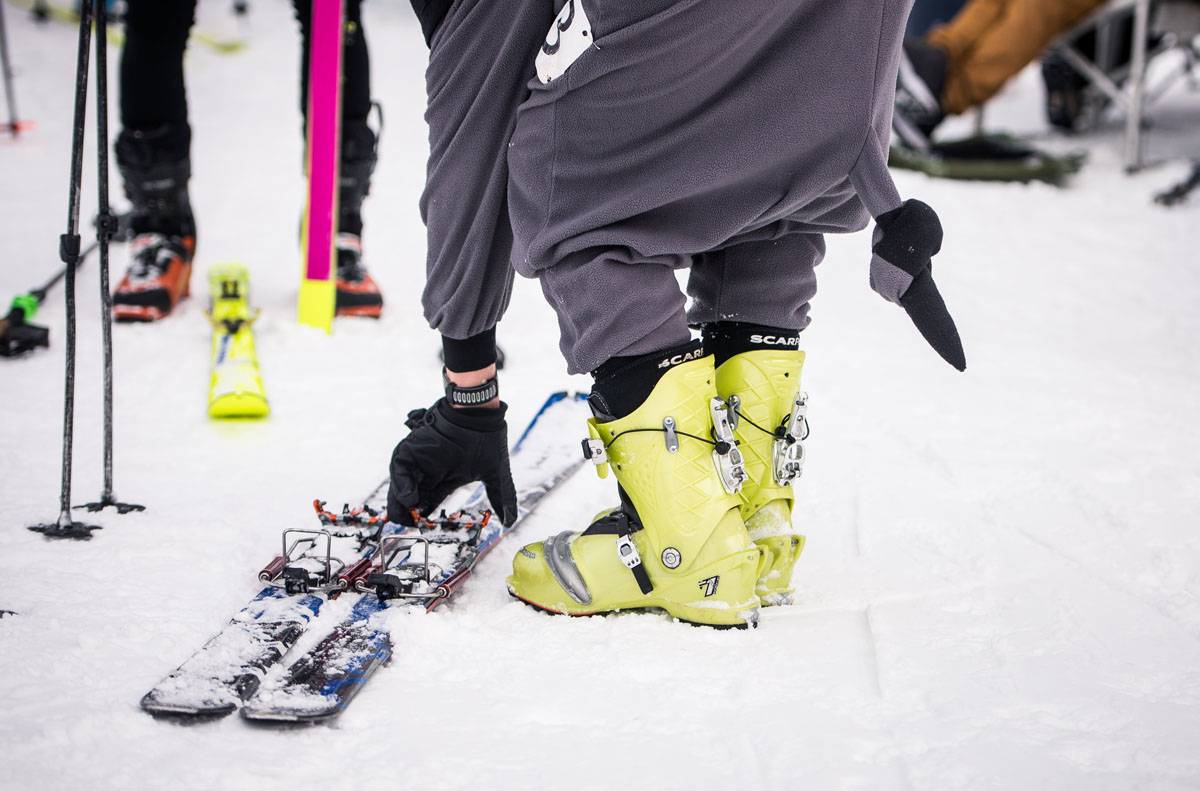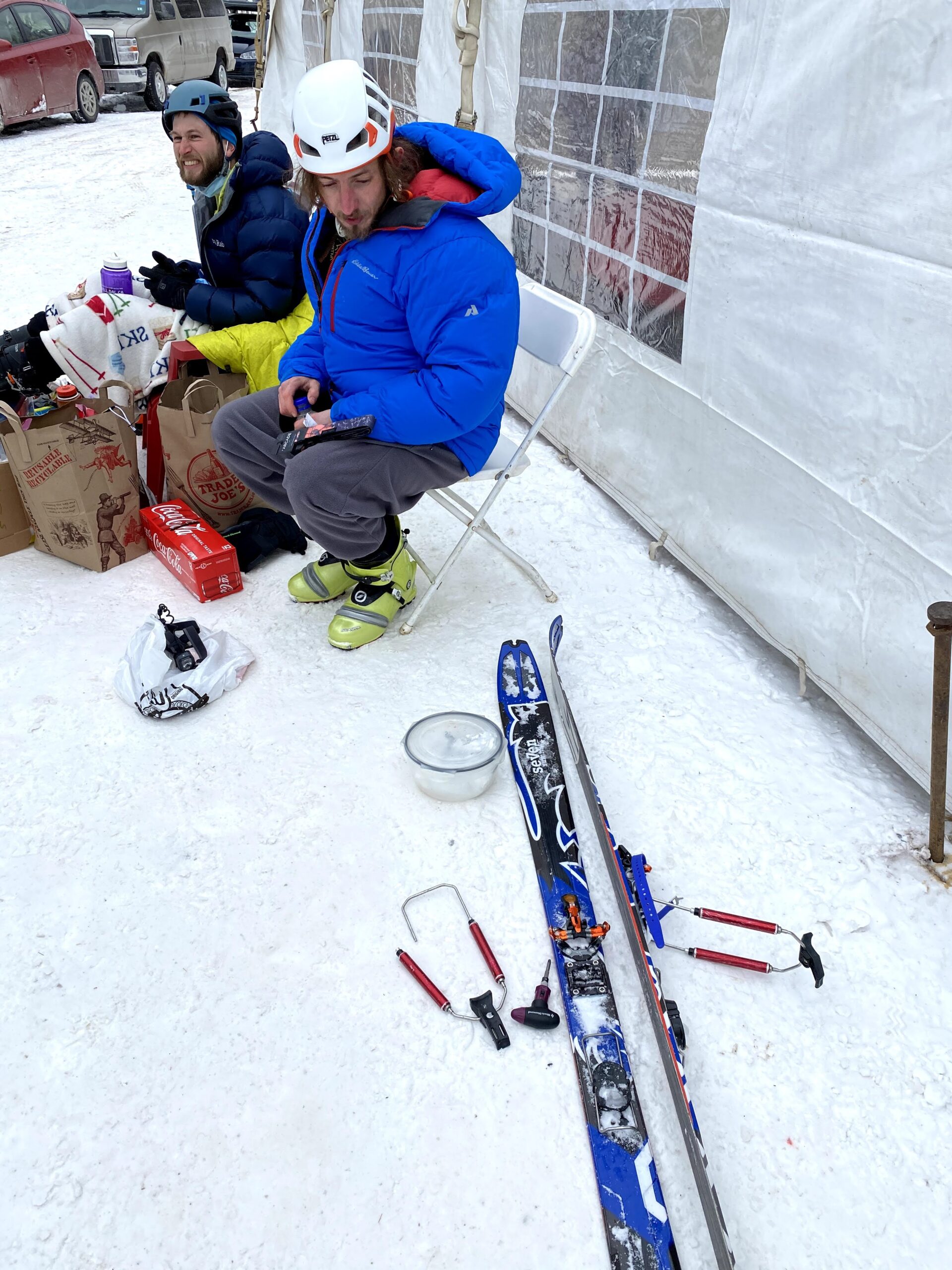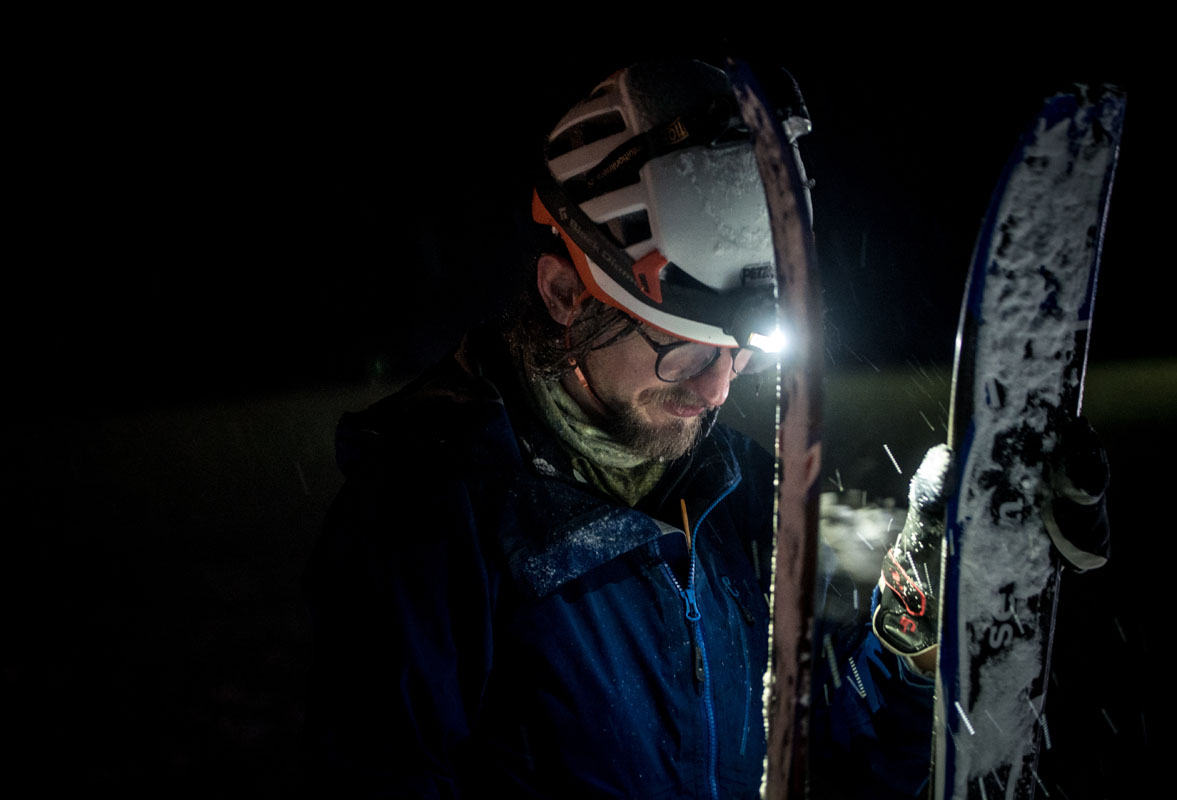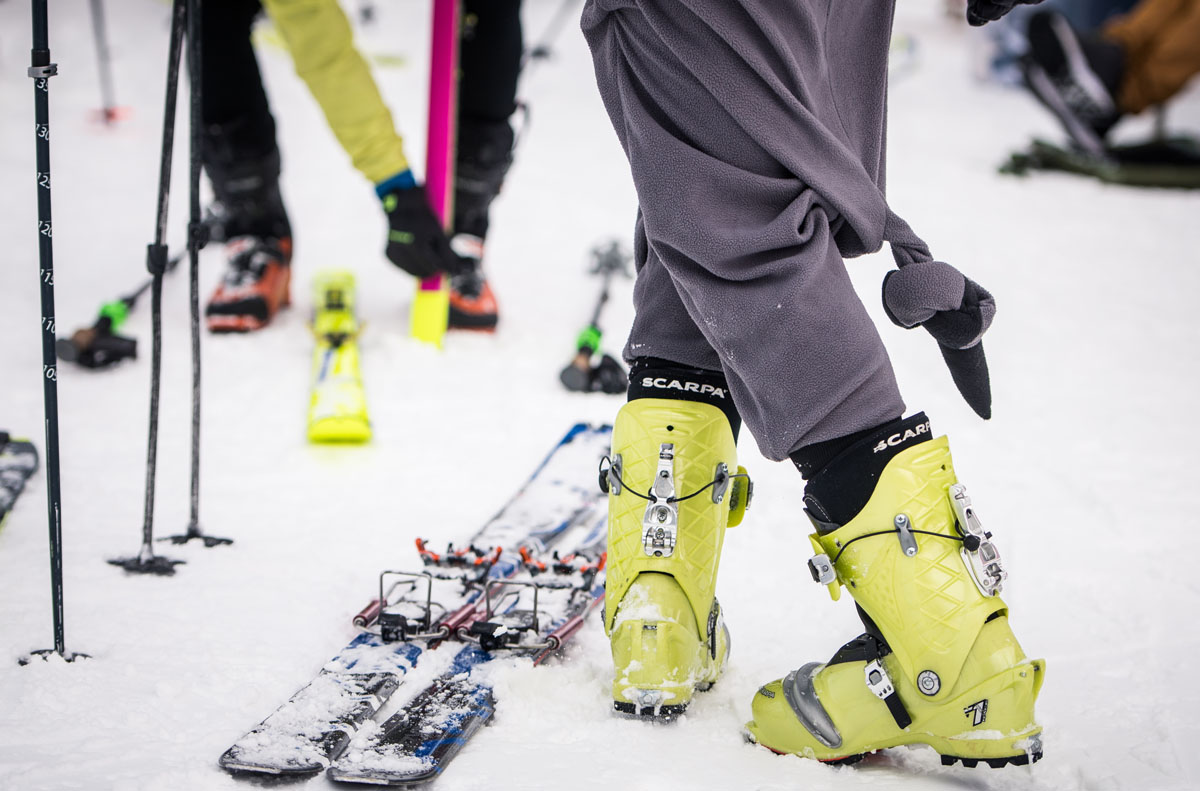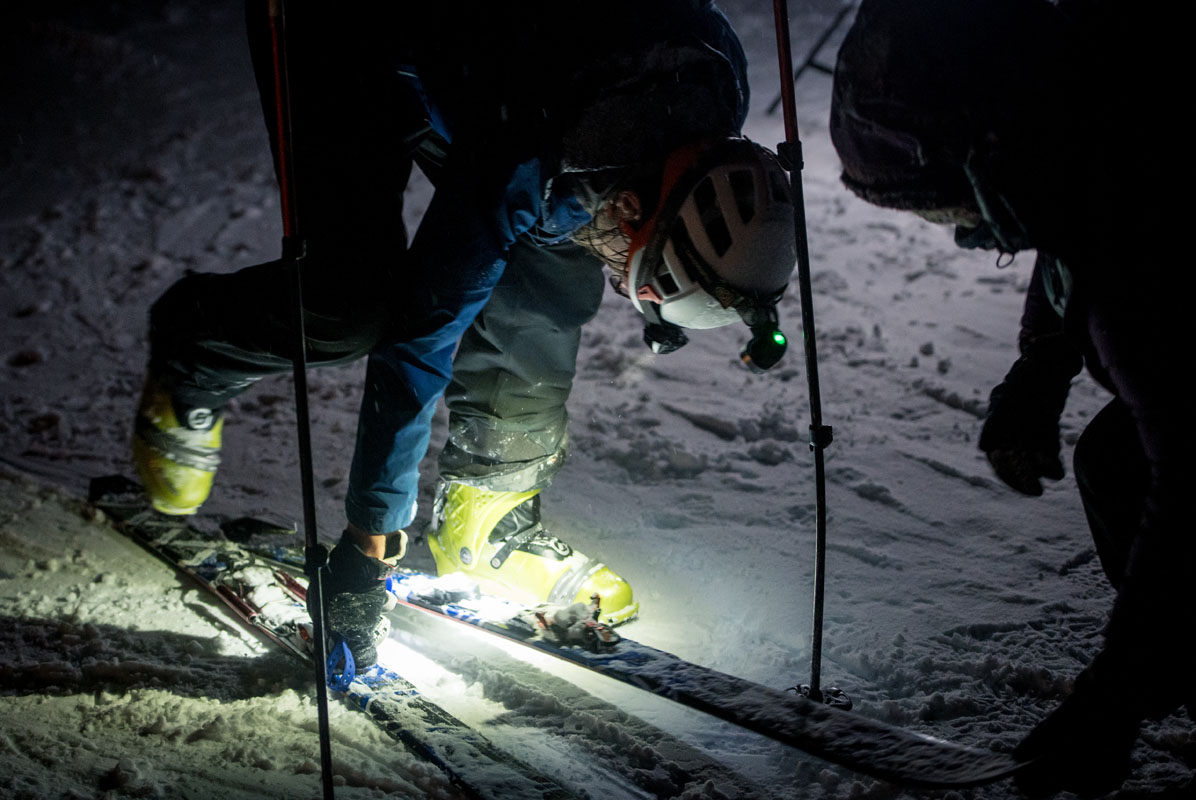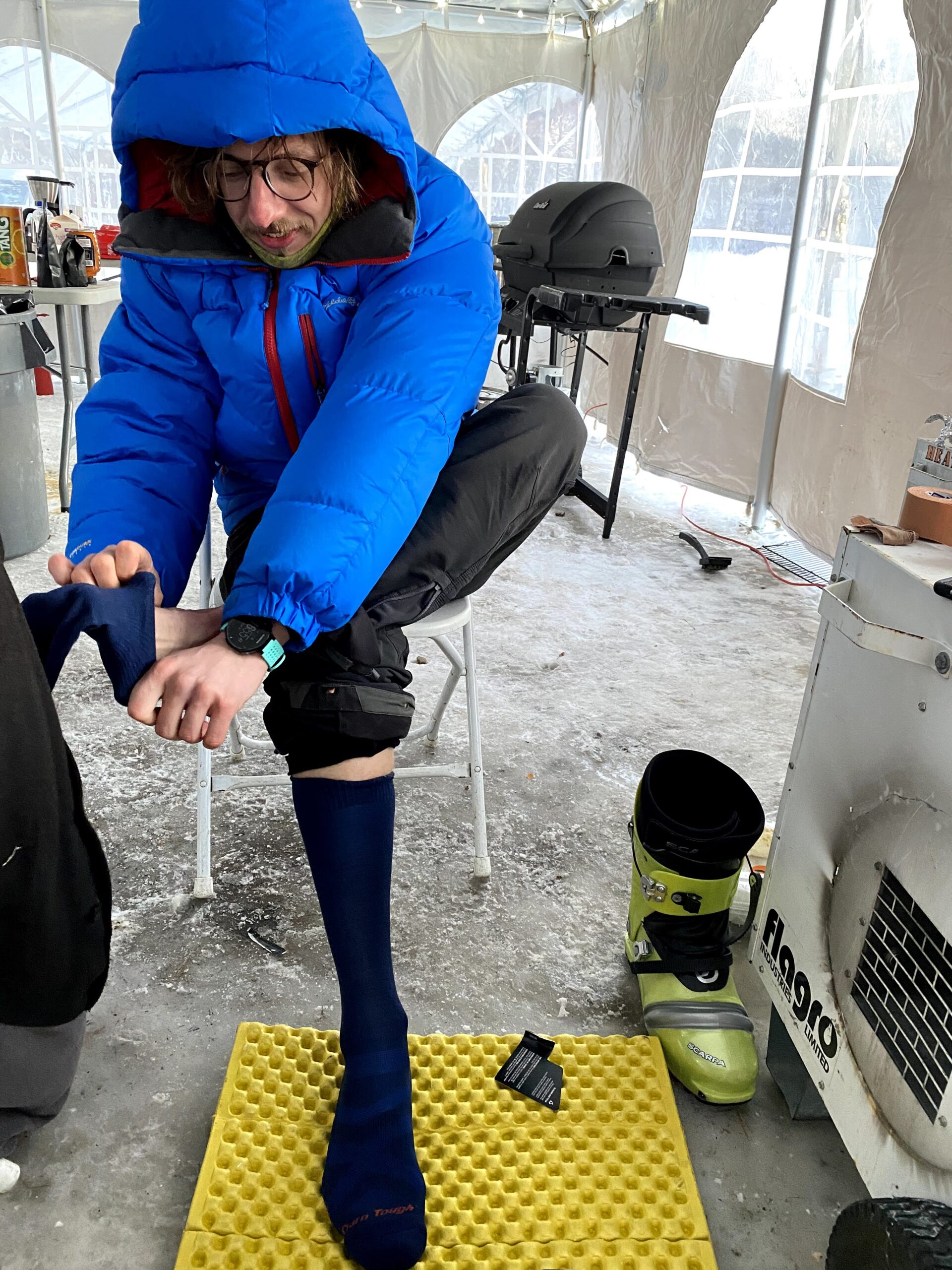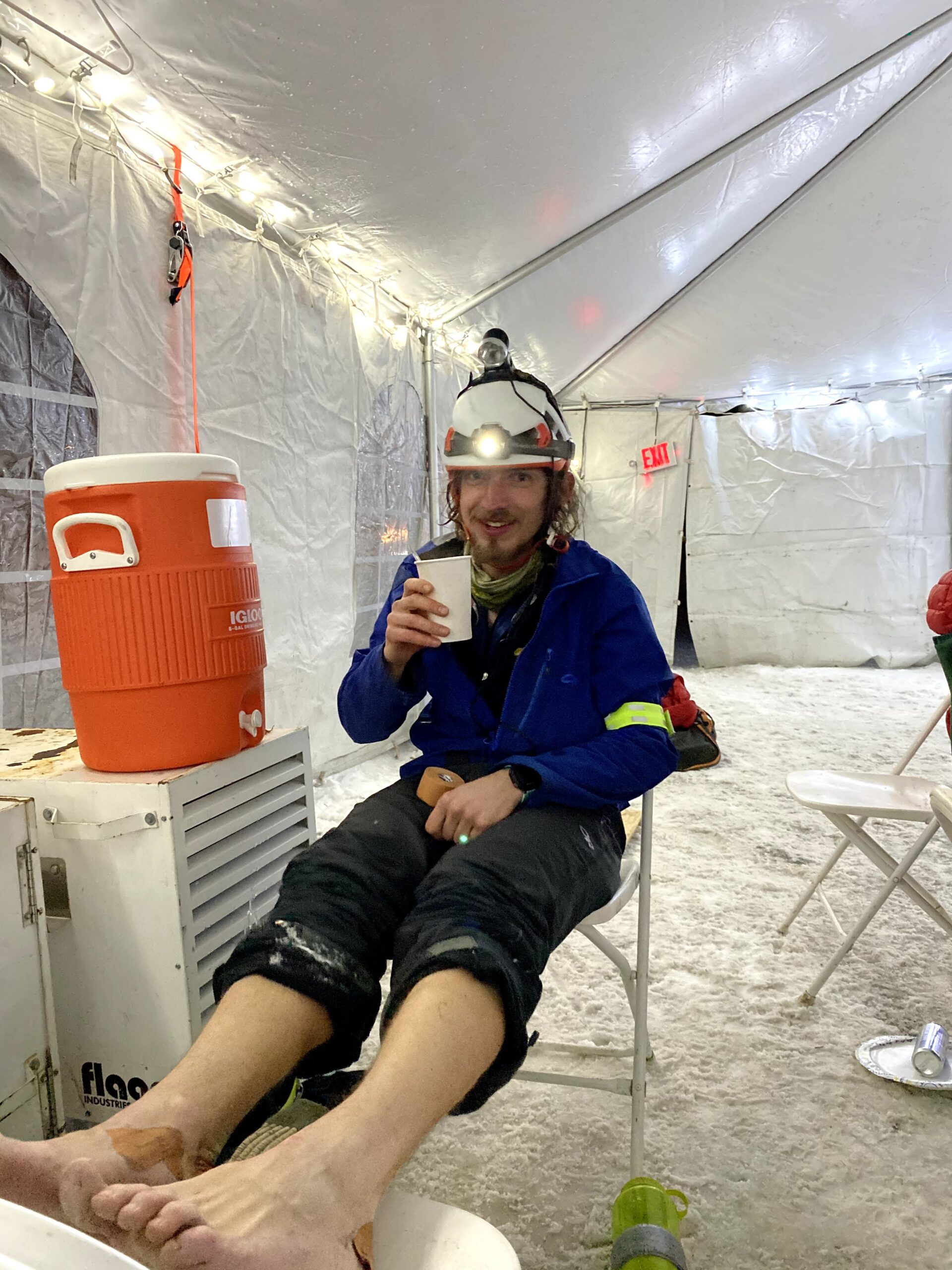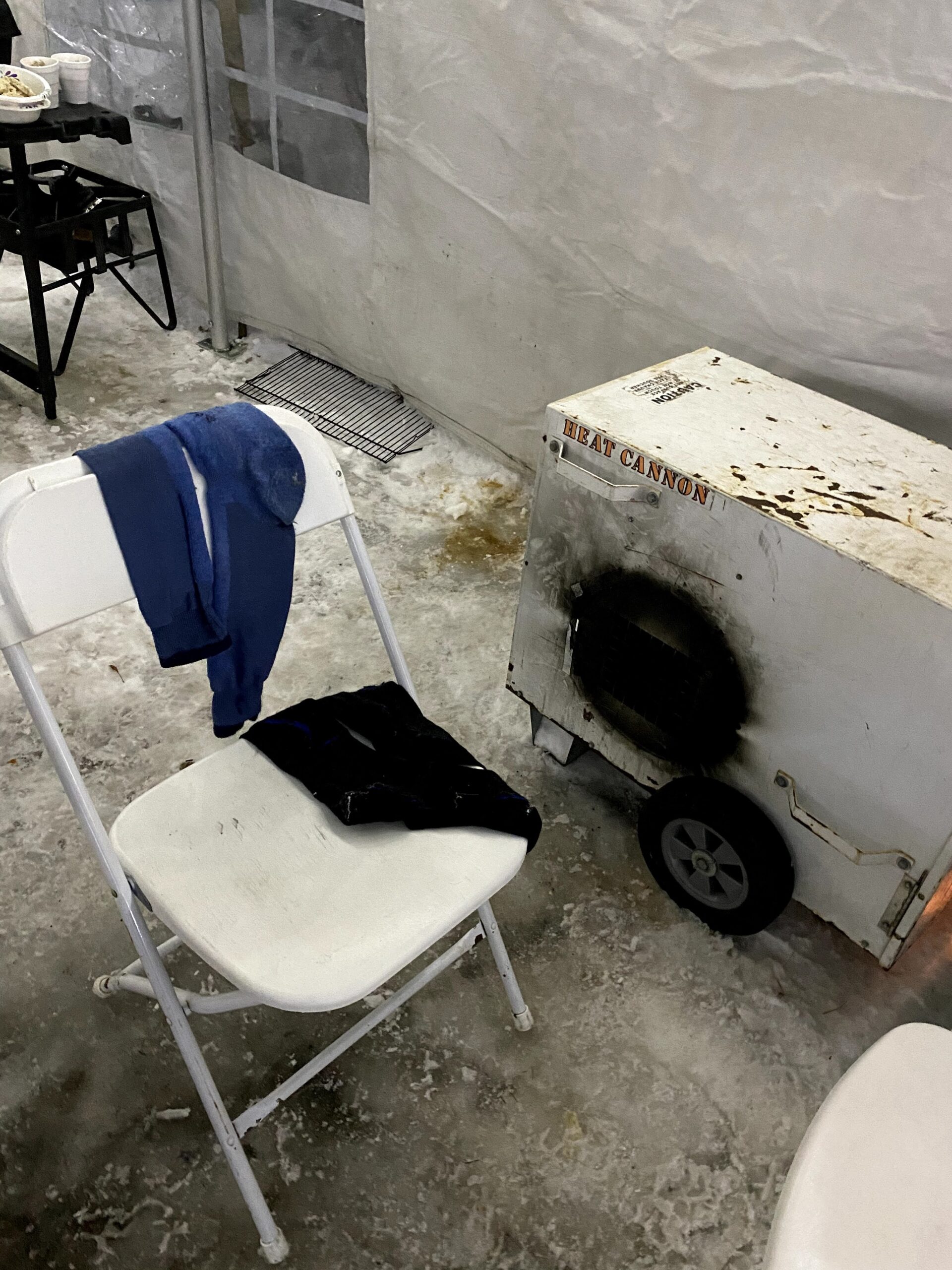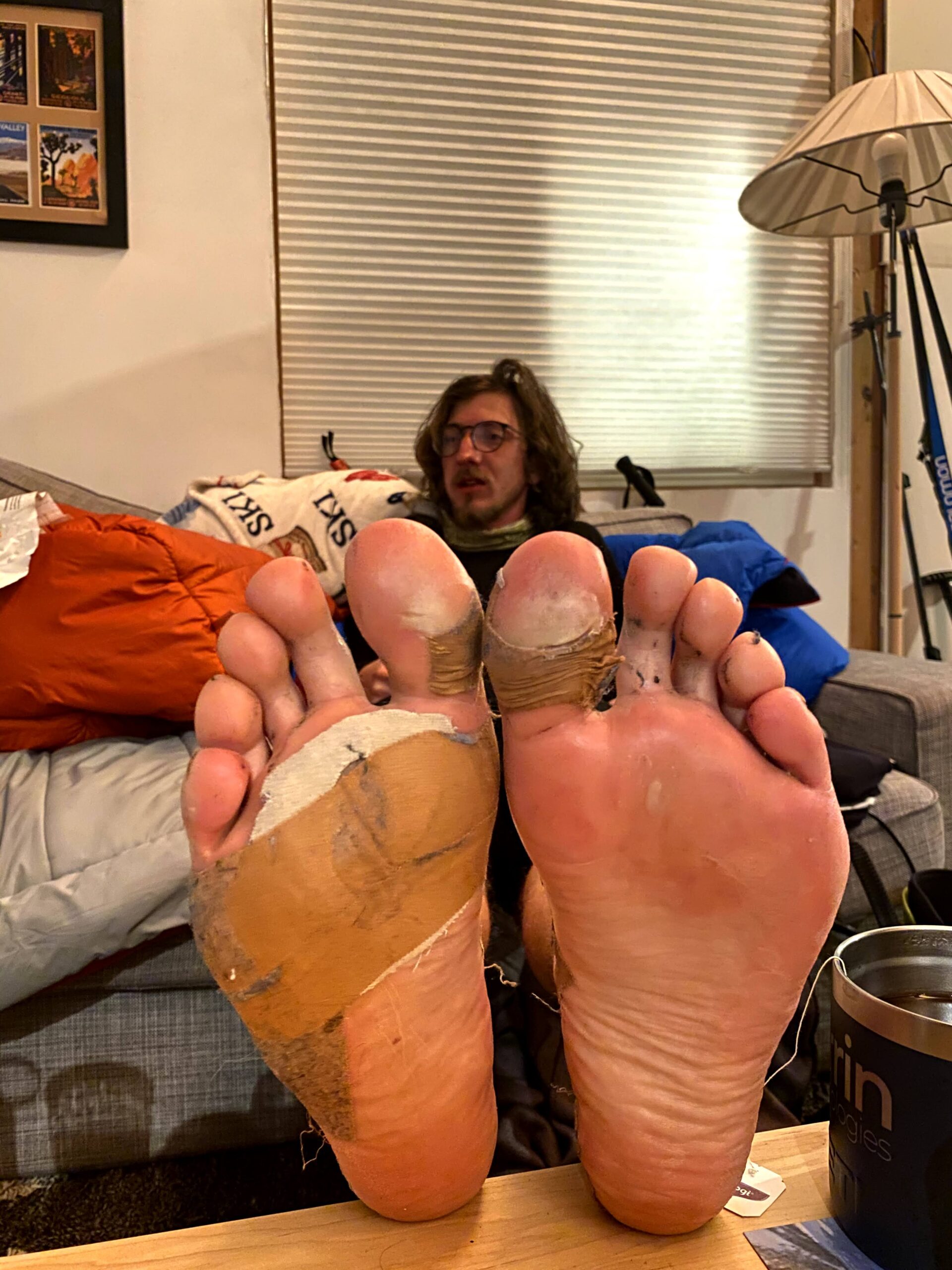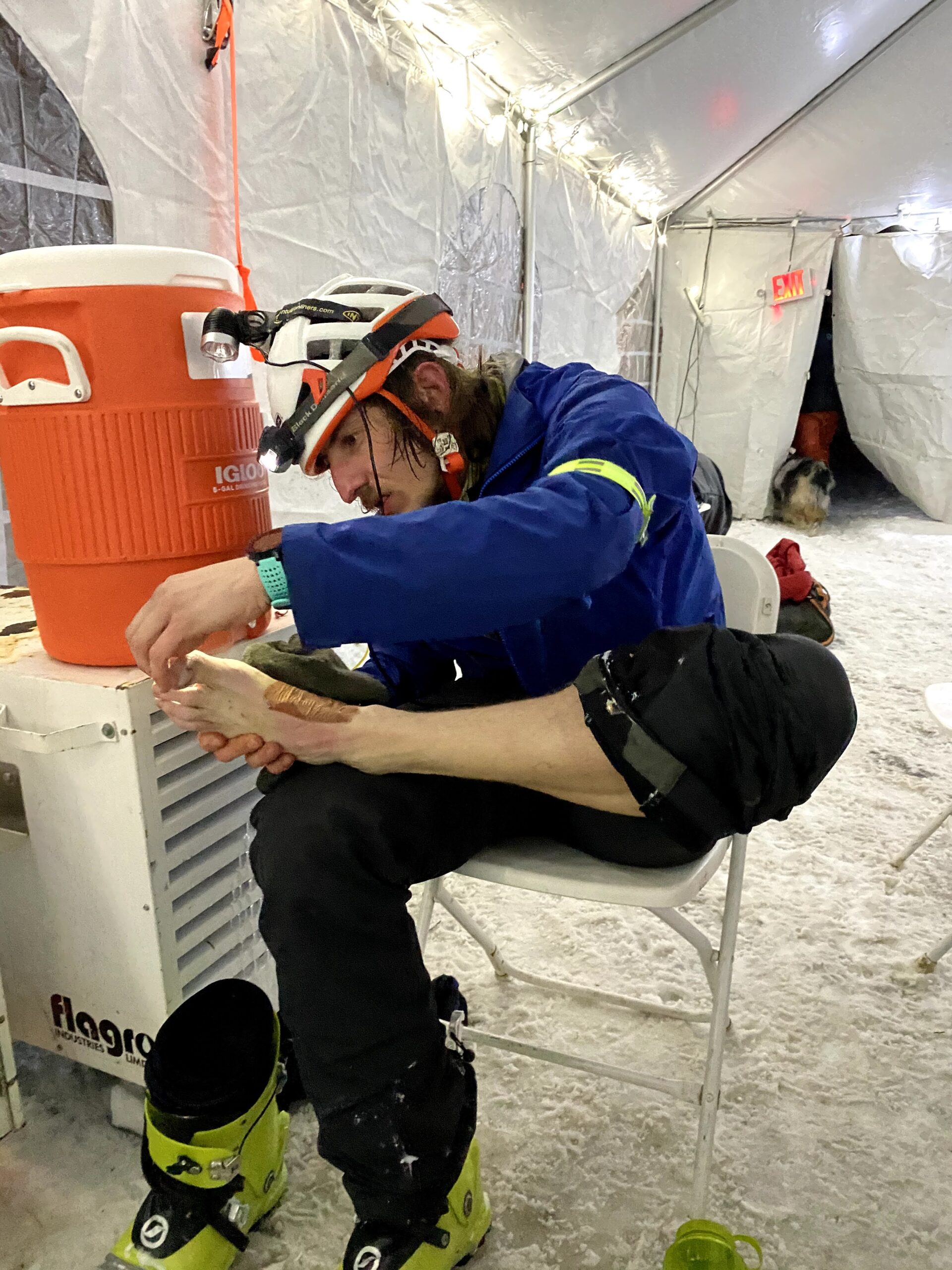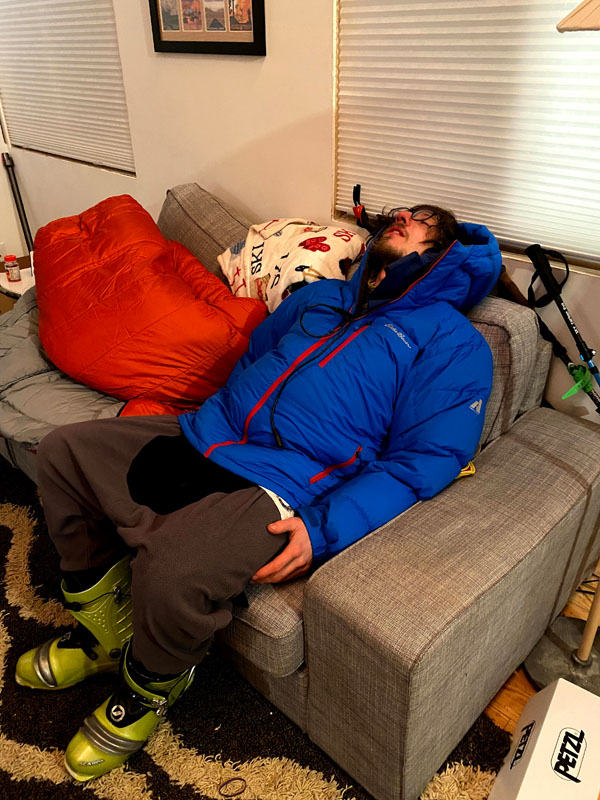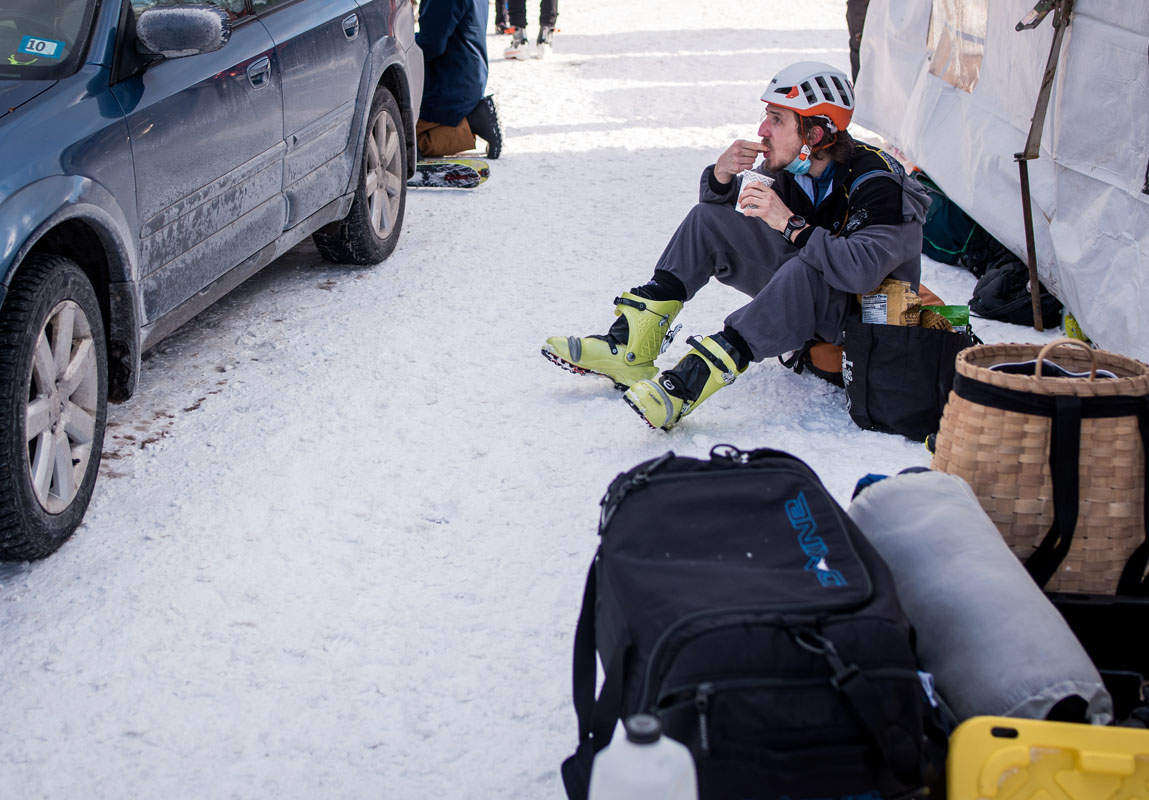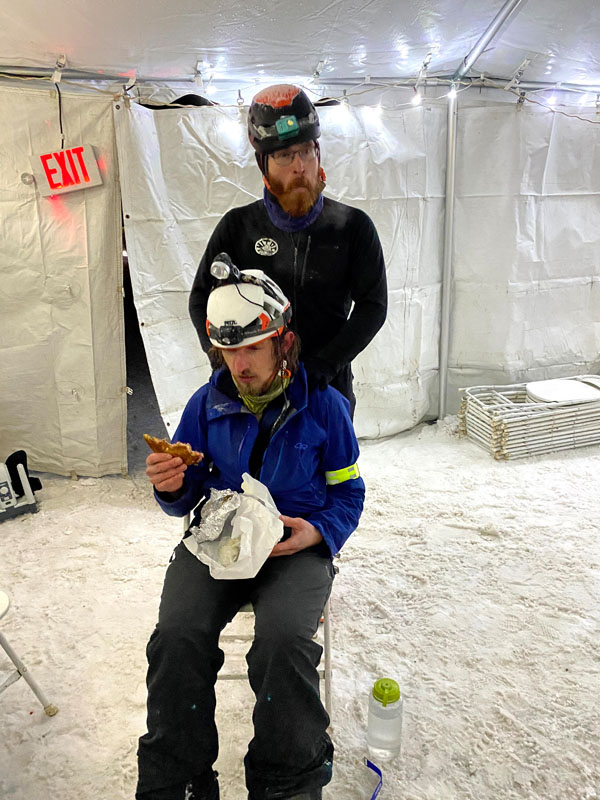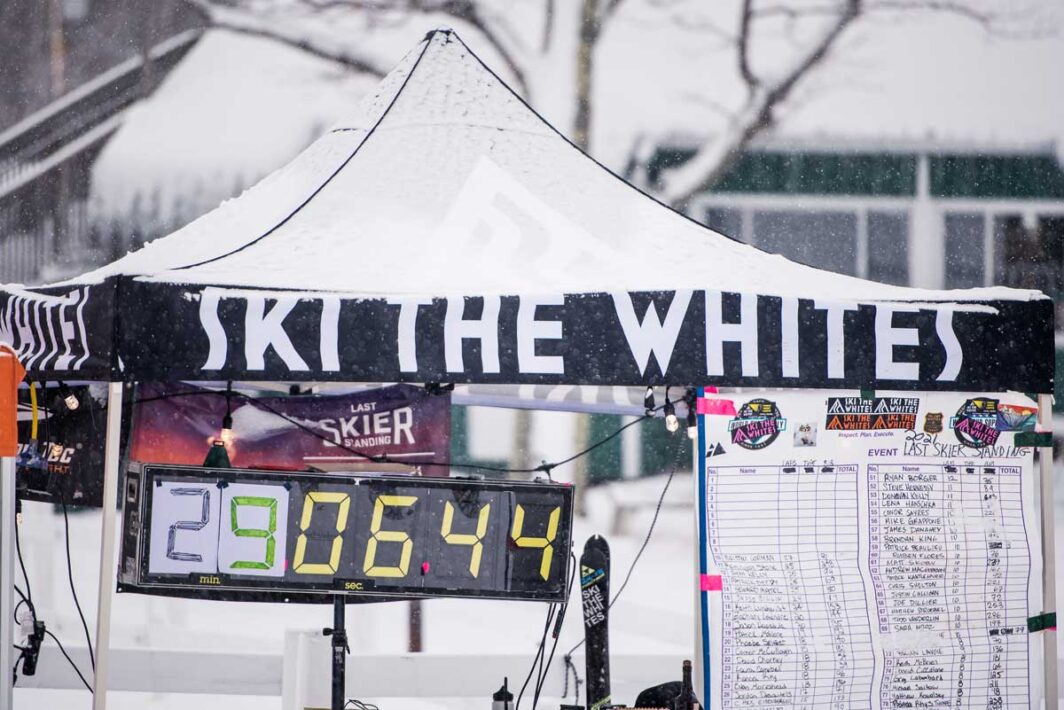
Last Skier Standing (thanks to Voile Straps)
Last Skier Standing feature photo courtesy of Brent Doscher.
Share this Post
You may have heard of the trendy term “Everesting” – where folks pick any hill and attempt to run, climb, ski, bike, etc., laps on said hill until they have reached the same vertical gain as climbing Everest- 8,848m or 29,032 feet. Sounds pretty tough, right?
Now imagine “Everesting” twice- back to back, over the course of three non-stop days. In a “trash panda” onesies. On Craigslist telemark skis. With a broken binding that’s Voile Strapped to your boot for nearly half of the laps.
Enter Ben Eck, the winner of Ski The Whites “Last Skier Standing” event. The name perfectly describes the objective of the event: be the last skier standing. However, there’s more to it than just standing. Participants must complete the course within an hour and be ready to go in the starting zone before embarking on the next lap start. Ben miraculously skied for 61 hours straight, gaining over 64k of vert in over 150 miles.
Tap photo to expand.
Photos courtesy of Brent Doscher.
We are so impressed by Ben’s superhuman feat and Voile Straps ingenuity, that we are thrilled to sponsor him as an honorary V-Team member with a pair of skis, a Voile TTS binding, and a whole bunch of Voile Straps.
Ben was willing to endure a bit more and answer our questions. Below is an interview about his experience:
Voile: Gives us a brief background about yourself and skiing.
Ben: I grew in the suburbs northeast of Boston, and learned to ski as a kid, but was never super into skiing until college. I had always been really into the outdoors, so in college I joined the MIT Outing Club. They have a really good program for introducing folks to winter outdoor activities, which is where I learned to backcountry ski. At the time, we didn’t have much in the way of AT rental gear, but we did have a substantial fleet of telemark skis so that’s what I started to learn on. I really liked the turn and the crossover from nordic skiing and ease of transition for long rolling tours, so I’ve stuck with it. In general, skiing appeals to me in a lot of the same ways biking has: it’s a fun and efficient way to go really far and see a lot of interesting places. By trade I’m currently a PhD student at Northeastern University in Boston studying Environmental Engineering. My research and background is in developing environmental sensors, so I like to pretend that looking at SNOTEL sites and stream gages is actually work.
V: Have you competed in Last Skier Standing before?
B: I haven’t, not! I wasn’t living in New England for the first event last year, but saw some friends had done it. After a little bit of FOMO last year, I was excited to be able to finally do it myself!
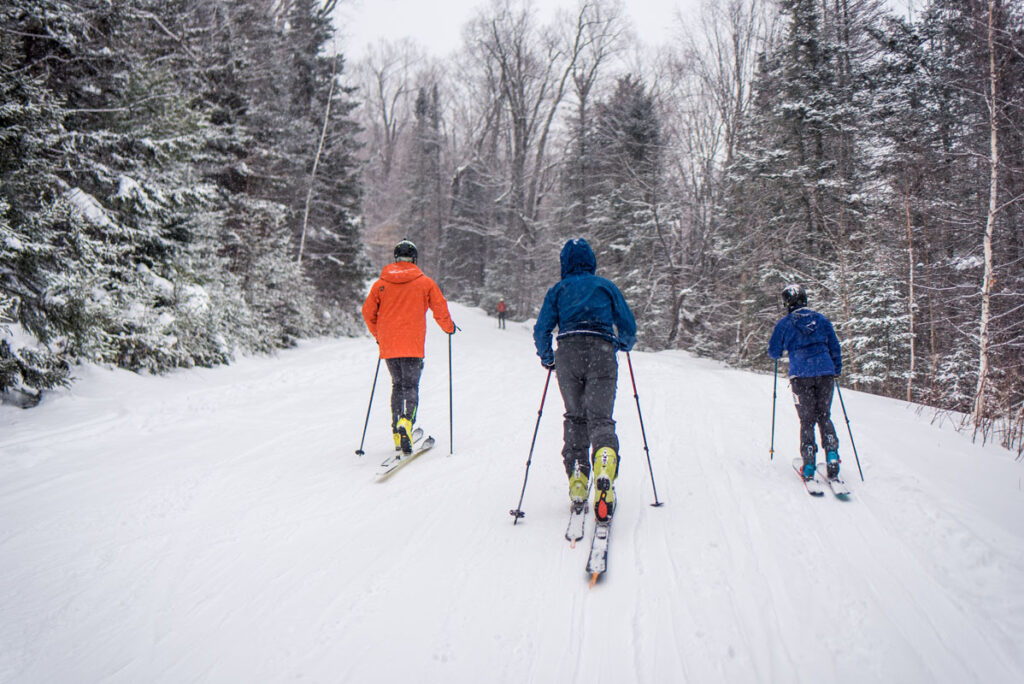
V: What skis, boots, bindings, and skins did you use?
B: I was on a bit of a frankensetup that I had bought used off Craigslist last year. My skis were Dynafit Seven Summits with OMG [Olympus Mountain Gear] telemark tech (TTS) bindings (that use Voile spring cartridges!) with G3 ion toes and some BD mohair skins I had lying around. But that’s kind of par for the course for a lot of TTS gear – there’s a really great community of tinkerers over on the BackcountryTalk forums and elsewhere online always trying to improve on TTS gear. For boots I was using some of the older Scarpa F1 Race AT boots (~2010?) back when they made them with a bellows. It’s kind of funny that the lightest telemark boot available is an AT boot never intended to be used for telemark. The boots also have a bit of a cult following in the TTS community, with forum threads where folks will post PSAs about pairs they’ve found in their local gear stores or on Ebay/Craigslist so that others can buy them. I think that this goes to show that with a modern-ish boot with good range of motion (there are well substantiated rumors that Scarpa is working on one) and the free pivoting toe of TTS, telemark doesn’t have to be a disadvantage in touring.
Tap photo to expand.
Photos courtesy of Brent Doscher and Michelle O’Donnell.
V: You experienced equipment failure. Tell us what broke and what you used to bandage the problem?
B: Yeah, one of the [OMG] connecting rods for the heel cable of my binding sheared off when I was skiing back down about ~25 hours in (see photo). I just removed the broken heel cable for skiing uphill, then for the downhills I threaded a Voile strap through one of the heel riser wires and around my boot to give at least a little bit of heel resistance.
V: How many Voile Straps did you use? Did you notice a big difference in performance of the binding with the Voile Strap modification?
B: I just used the one Voile strap for my binding, but I made sure to always carry a couple on every lap in case I had any skin glue problems. It would be a bummer to ski for so long only to have a gear malfunction be what puts you over time! I didn’t try telemarking on the bandaided binding because I was afraid of breaking more things, but I liked to joke that they didn’t perform any worse for alpine turns than any other tele binding.
V: Did the Straps ever come loose or fall off?
B: Nope, they worked great for 36 more hours/laps of skiing!
V: Another gear that made it possible?
B: My friend Tom turned me on to using Leukotape for pretaping known hotspots on my feet. My feet were pretty rough as it was, so I can’t imagine what it would have been like without it! Pro-tip: make sure to get the name brand stuff, off brand just falls off.
V: Are you an endurance athlete by training? Did you train for Last Skier Standing? Have you competed in many skimo races in the past?
B: I think I’m drawn to endurance sports because I like exploring and going to new places, and if you can go further, you can explore more. My friend Mike convinced me to sign up for my first 24-hour mountain bike race in high school, and the fun and supportive atmosphere got me hooked. I’ve never been great at discipline or training, but I try to get out for at least one big endurance ride/ race or tour (on skis or bikes) a year or so. I only got into skimo a little bit last year – I was trying to train for the Grand Traverse, so I did some of the local weeknight skimo races that they had where I was living. I didn’t specifically train for Last Skier Standing, but I did a really fun 6-day hut trip in Colorado that I think was really helpful in getting my ski legs and feet back under me.
V: How many sock changes did you complete during the race?
B: I had only planned to ski for 24 hours, so I only brought three pairs of socks. This seemed reasonable at the time, but after that 24 hours I was really wishing I had more… I started just drying out my dirty socks in front of the heater and recycling them, which is better than not changing socks but definitely not as good as clean socks. Eventually one of the race organizers, Andrew Drummond, took pity and gave me a new pair from his shop (Ski The Whites), and I borrowed another pair from a friend. I probably changed socks around every 6 hours, so all told I changed socks about 10 times.
Tap photo to expand.
Photos courtesy of Michelle O’Donnell.
V: What did you eat to fuel this feat?
B: Eating lots of candy used to work really well for me, but lately it hasn’t… I decided this time around to mostly try and eat real food (pizza, sandwiches, etc.) and drink liquid with calories (hot Tang, cocoa with coffee mixed in, Ramen noodles), which worked pretty well. My favorite food that I brought was this grocery store frozen pizza that I had cooked the night before, but later refroze in the cold. The race organizers warmed it back up on the grill, but I didn’t always get around to eating all of it, so it went through several freeze-thaw cycles throughout the race (but it was still delicious). Last year Rick Chalmers fueled his win with raw oysters every 5 laps, and I was lucky enough to get one this year- maybe that’s what pushed me over the edge?
V: Did you know Jerimy Arnold (the runner up who kept challenging Ben for another 16 hours as the final two participants on the course)?
B: I hadn’t met Jerimy before, but we definitely got to know each other pretty well after 16+ hours of skiing together. It was funny, I had looked at the signups just before the race and saw that he lived in the town I grew up in, so I was hoping at some point to run into him. It only took 40 hours or so before the field thinned out enough before we finally met!
V: Who helped support you through the race?
B: It was a team effort, but my girlfriend Michelle was the team leader and MVP for sure. I was only planning on doing 24 hours, so she was only mentally and materially prepared for hanging out in the cold and sleeping in the car for one night, but she stuck it out for three. It was really great to have someone there to help deal with my gear, feed me, and tell my sleepy self what to do in the limited rest time I had. But like I said, it was a team effort, from other friends who were there, to folks who called and texted to cheer me on, all the way to Michelle’s parents who fed our cats for an extra 2 days.
Tap photo to expand.
Photos courtesy of Brent Doscher and Michelle O’Donnell.
V: Were there many moments where you hit a wall but kept going?
V: The low point for me was Monday morning. At the beginning of a lap, as I was skinning I felt this really awful tearing sensation on the bottom of one of my feet. I didn’t know what it was but assumed it was a bad blister. It made that lap really painful as I had to shuffle awkwardly because I couldn’t weight my foot right. I finished the lap though and threw some moleskin and clean socks at it, which made it a lot better for the next lap. I told myself that I couldn’t quit after just one bad lap, and I just never had two really terrible laps in a row.
V: What was harder to deal with, the mental or physical pain?
B: I felt pretty good mentally and sleep-deprivation wise for most of the race, with the exception of a few laps where I could feel myself nodding off while skinning. My feet were definitely my Achilles heel (ha) and what I was most worried about being the limiting factor.
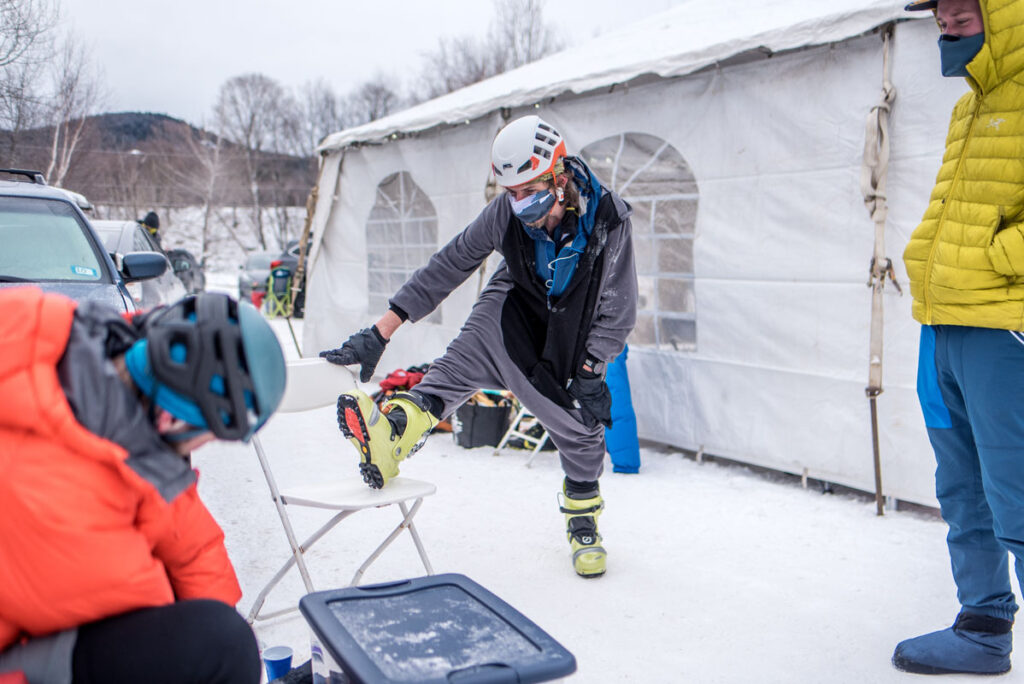
V: Did you sleep at all during the race? Were naps allowed?
B: The only rule was that you had to be ready to go out for another lap at the top of the hour, so whatever you could accomplish in 15-20 minutes after finishing a lap was fair game. I didn’t nap until Monday afternoon (day 3)- there was a moment then that it seemed like maybe Jerimy was going to quit, but when he didn’t I knew that we would have to go into the night again and I wasn’t sure how long I’d last without some sleep. I started just lying down in the tent on a foam pad for 10 minutes between laps, but that was a bit cold, so another one of the race organizers, Monte, let me pass out in his minivan. I have a theory that if you could be fit enough to sustainably do laps in 30 minutes, you could easily nap for 20 minutes, which would work out to a normal 8 hours a day. You’d be unstoppable. I don’t know if I want to try it, but someone else should.
V: What were conditions and weather like for the event?
B: Conditions and weather were pretty much perfect. Winter got a bit of a late start here in New England, so I’m pretty sure it was just the week before or so that Black Mountain got enough coverage to ski top-to-bottom for the race. Saturday and Monday were super sunny, which was great for motivation, and Sunday afternoon we got a couple inches of fresh snow which made for some actually fun skiing at hour ~30. There was a moment Sunday night where I was afraid the tent was going to blow away in the wind, but you couldn’t really ask for a better three days.
V: Tell us about this trash panda onesie? Is there a bigger story behind the costume? How long did you wear it?
B: I just really love raccoons. There used to be some that lived outside our apartment and would get in fights over who would get to eat the fermenting crabapples, and we’d occasionally watch them at night. I also like recycling old stuff, and raccoons love trash so I think we’re a pretty good match. My girlfriend Michelle got me the trash panda onesie as what might be the best birthday gift ever. Despite looking great and being made out of polar fleece it is definitely not an awesome technical garment- its hot on the way up and cold on the way down. I wore it for the first 25 hours or so until it started snowing- I knew I was just going to get totally soaked and cold so I changed into some normal ski clothes.
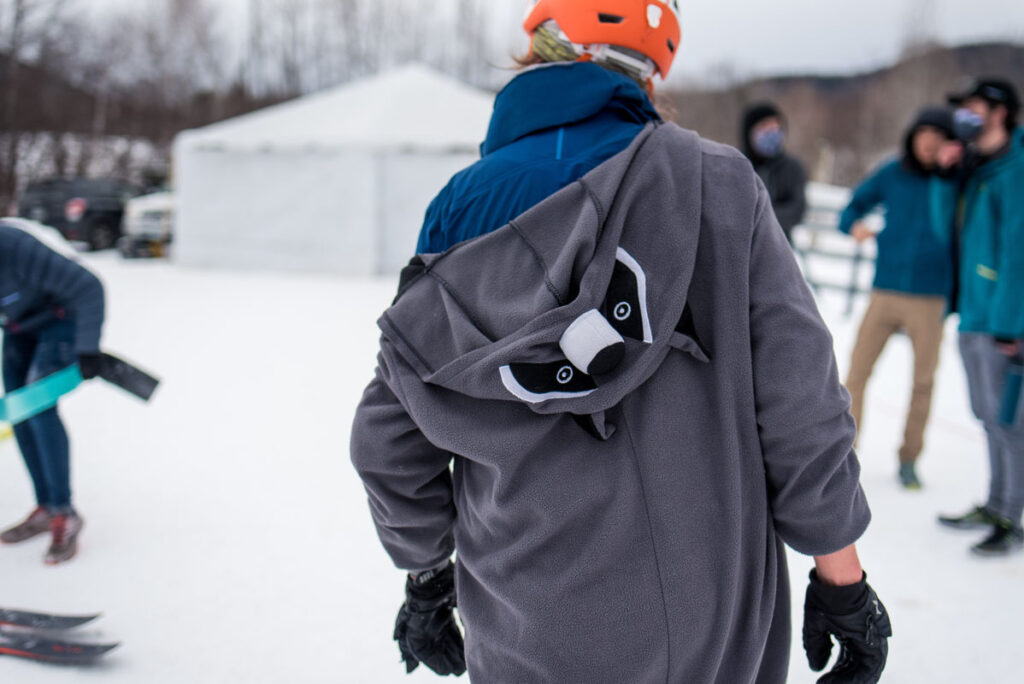
V: Did you celebrate after or have you been recovering ever since?
B: We celebrated but it was pretty low-key. My friend Neil drove me back to his place a couple minutes away, and he, Michelle and I had a beer or two then passed out. We thought about popping a bottle of champagne but that seemed like too much effort. I had a really nice day the next morning; I just sat around at Neil’s house, watched it snow, and on and off read and napped. The last couple weeks I guess have been a bit of a drawn out celebration: it’s been really fun to hear from folks I hadn’t talked to in a while who happened across stories about the race and then reached out. I felt 90% after a couple days, but it definitely took a week or two for my body to fully recover and to catch up on work.
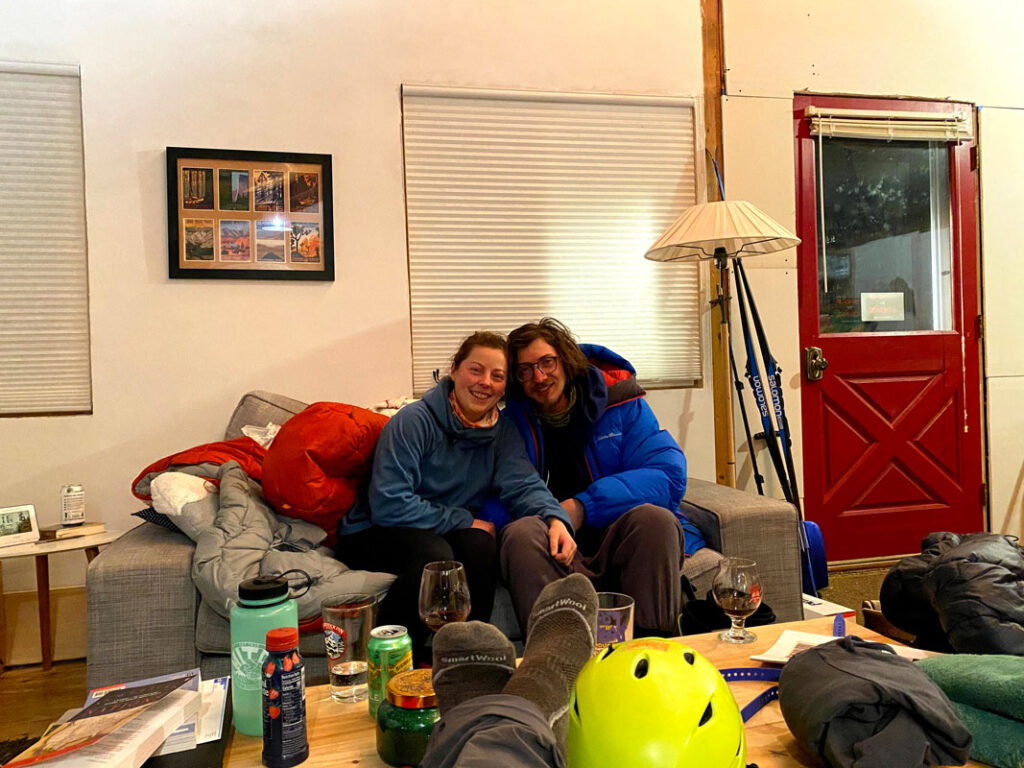
V: Do you plan to compete in Last Skier Standing next year?
B: I don’t think I have much choice! I think I’ll just go into it the same way as this year, just one lap at a time. Maybe I’ll bring more socks though…
Share this Post



